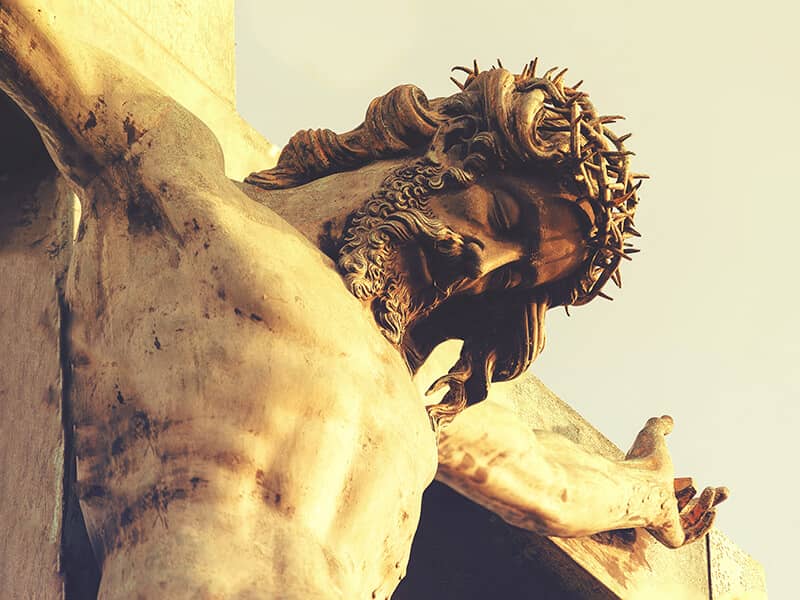
Something is bothering you.
It gently nudges your eyes open in the dead of night. It furrows your brow as you’re driving to work. It sits with the crushing weight of the mundane day-to-day sameness we all feel from time to time, and it whispers with the velvet voice of nameless, faceless doubt, repeating one phrase over and over.
“You lack.”
But what do we lack? What is this deep-seated yearning that makes us just uncomfortable enough to gaze longingly from the window of even the most perfect life, wondering if there is more?
It’s God we seek, though we seldom know it. It’s spirituality. It’s the unseen world—the one which we were made for.
Spirituality is not a luxury. It is a need. And for those of us who lack it, it is one which usually makes itself apparent when our lives seem most perfect. Spirituality, in short, is the belief that there is something greater and immaterial. It also involves our engagement with that immaterial world. When our faith is strong and we are close to God, our spirituality is great, and we feel fulfilled.
When we’re far, however, we feel a yearning for something more. For some, the printed words of scripture begin to just feel like their constituent parts—ink and paper—rather than the direct connection to the mind of God that they are. When this happens, we must act.
Being reminded that there are places in our world that are directly connected to those we read about in scripture can help to reestablish our spirituality. Seeing the real-world sites of Biblical history, or traveling to those places where miracles have been known to happen can reignite our faith when it grows stale. We say that we believe, and we may hold that belief within our minds, but there’s something to touching the same stones that Christ once did, to visiting a cathedral where a miracle happened, or seeing the pulpit from which a prominent figure from church history spoke—something that strengthens our faith and ties our spirituality to the material world. Taking the time to travel to these places can help you reconnect with God, and fill that hole in your heart that has been slowly widening.
Imagine traveling to Israel and walking the same lands that the Son of God once did, seeing His birthplace, the site of His crucifixion, and the tomb that he walked from when He rose from the dead. This is where it all really happened, and that same dust which now dots your feet was once brushed from His. The knowledge is heartening, inspiring.
Imagine yourself at the foot of Mount Sinai in Egypt, where Moses spoke to God and received the Ten Commandments for his people, or at the site in Corinth where the Apostle Paul defended himself against charges of persuading people to worship God in ways contrary to the law, or at a cathedral where the Virgin Mary is said to have appeared in apparition and wrought miracles.
While you may undertake your pilgrimage by plane and automobile rather than by foot, your own journey, should you wish to take it, is no less sacred. For many, visiting sacred places is not only an opportunity to grow in faith, but to begin anew, to take away life-changing inspiration and purpose. These places can help us to encounter the divine and remember what really matters.
Traveling to places like Israel and the Vatican and the church of Martin Luther can also have another effect—they can give context to our understanding of scripture. Knowing that Paul the Apostle traveled to Greece, and actually seeing the country, the city and, the ruins upon which the Apostle once stood allows us a window into his time—we see that other things were going on in the world, that empires were thriving and falling and people were going about their lives in other places. Other experiences, like seeing the path that Christ took on his way to the crucifixion gives us an idea of the difficulty He endured, giving us a new appreciation for what God did for us. This context is important. When we become aware that the events our spiritually is grounded in occurred in the midst of historical civilizations, countries, and empires, they feel all the more real.
Sometimes, we have to remove ourselves from our ordinary lives so that we can gain a better understanding of our spiritual ones, and it’s not until we arrive at that tomb or cathedral or ruin that we are able to detach and reopen ourselves to the possibility of the divine.
C.S. Lewis, Christian apologist, theologian, and fantasy author, famously wrote that “If I find in myself desires which nothing in this world can satisfy, the only logical explanation is that I was made for another world.” And we are. We are both spiritual and physical beings—dust filled with the breath of life, and spoken into existence. Just as Christ proclaimed that “man shall not live on bread alone, but by every word that proceeds out of the mouth of God,” we must not neglect our spiritual selves. Should we do so, the hunger pangs will come—subtle, yes, but insistent.
If you feel that hunger, then consider making your own personal pilgrimage, your own journey to other countries and lands, and bridge the gaps between your belief and your everyday life. Your faith will come alive.

